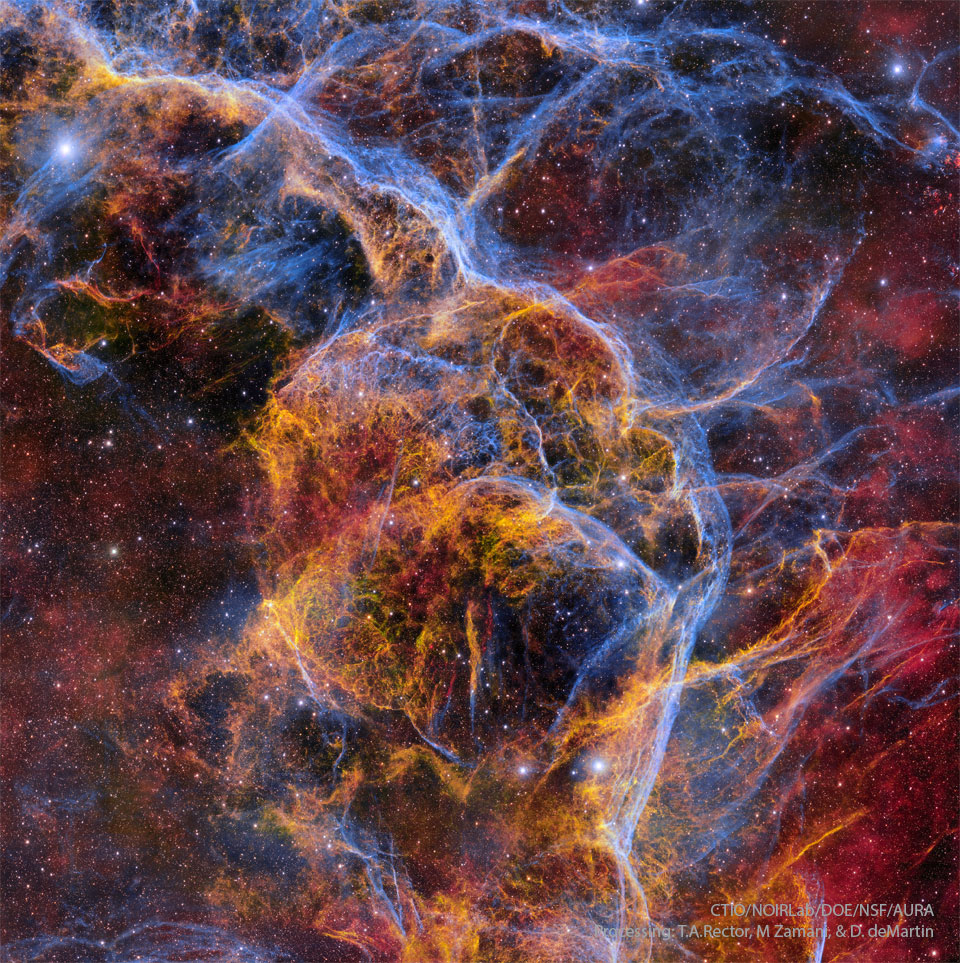2024年4月16日
Filaments of the Vela Supernova Remnant
Image Credit: CTIO, NOIRLab, DOE, NSF, AURA; Processing: T. A. Rector (U. Alaska Anchorage), M. Zamani & D. de Martin (’s NOIRLab)
Explanation: The explosion is over, but the consequences continue. About eleven thousand years ago, a star in the constellation of Vela could be seen to explode, creating a strange point of light briefly visible to humans living near the beginning of recorded history. The outer layers of the star crashed into the interstellar medium, driving a shock wave that is still visible today. The featured image captures some of that filamentary and gigantic shock in visible light. As gas flies away from the detonated star, it decays and reacts with the interstellar medium, producing light in many different colors and energy bands. Remaining at the center of the Vela Supernova Remnant is a pulsar, a star as dense as nuclear matter that spins around more than ten times in a single second.
Monday’s Eclipse Imagery: Notable Submissions to APOD
Tomorrow’s picture: two eclipse comets
船帆超新星遗迹的云气丝
影像提供: CTIO, NOIRLab, DOE, NSF, AURA; 影像处理: T. A. Rector (U. Alaska Anchorage), M. Zamani & D. de Martin (’s NOIRLab)
说明: 爆炸早已结束,但其影响仍在持续。大约1万1千年前,于人类信史开始之时,船帆座有一颗星发生爆炸,在天空中形成一个短暂可见的奇异光点。这颗星的外层冲撞星际物质,所产生的震波至今依然可见。这幅主题影像,在可见光波段捕捉到部份的庞大震波和云气丝。当气体从爆炸的恒星喷飞时,它会发生衰变并和星际物质发生反应,产生各种颜色和能量波段的光。船帆超新星遗迹的中心,则有颗孑遗下来的、密度和核物质相近的脉冲星,而其自转高达每秒10次以上。
周一的日食图像: 向APOD提交的值得注意的影像
明日的图片: two eclipse comets








One Comment